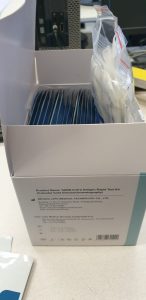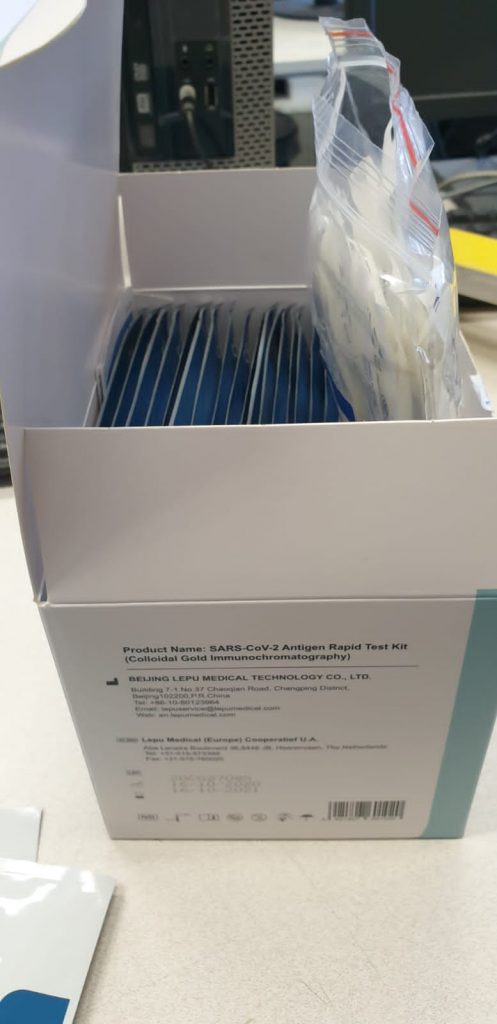Antibiotic resistance causes around 700,000 deaths a year worldwide. Without immediate action, we are fast approaching a post-antibiotic era in which common infections can result in death. Pseudomonas aeruginosa is the leading cause of nosocomial infection and is also one of the three bacterial pathogens in the WHO list of priority bacteria for developing new antibiotics against.
A viable alternative to antibiotics is to use phages, which are bacterial viruses. Yet, the isolation of phages that efficiently kill their target bacteria has proven difficult. Using a combination of phages and antibiotics might increase treatment efficacy and prevent the development of resistance against phages and/or antibiotics, as evidenced by previous studies.
Here, in vitro populations of a Pseudomonas aeruginosa strain isolated from a burn patient were treated with a single phage, a mixture of two phages (used simultaneously and sequentially), and the combination of phages and antibiotics (at sub-minimum inhibitory concentration (MIC) and MIC levels). In addition, we tested the stability of these phages at different temperatures, pH values, and in two burn ointments.
Our results show that the two-phages-one-antibiotic combination had the highest killing efficiency against the P. aeruginosa strain. The phages tested showed low stability at high temperatures, acidic pH values, and in the two ointments. This work provides additional support for the potential of using combinations of phage-antibiotic cocktails at sub-MIC levels for the treatment of multidrug-resistant P. aeruginosa infections.
Exploring Mucin as Adjunct to Phage Therapy
Conventional phage therapy using bacteriophages (phages) for specific targeting of pathogenic bacteria is not always useful as a therapeutic for gastrointestinal (GI) dysfunction. Complex dysbiotic GI disorders such as small intestinal bowel overgrowth (SIBO), ulcerative colitis (UC), or Crohn’s disease (CD) are even more difficult to treat as these conditions have shifts in multiple populations of bacteria within the microbiome. Such community-level structural changes in the gut microbiota may require an alternative to conventional phage therapy such as fecal virome transfer or a phage cocktail capable of targeting multiple bacterial species.
Additionally, manipulation of the GI microenvironment may enhance beneficial bacteria-phage interactions during treatment. Mucin, produced along the entire length of the GI tract to protect the underlying mucosa, is a prominent contributor to the GI microenvironment and may facilitate bacteria-phage interactions in multiple ways, potentially serving as an adjunct during phage therapy. In this review, we will describe what is known about the role of mucin within the GI tract and how its facilitation of bacteria-phage interactions should be considered in any effort directed at optimizing effectiveness of a phage therapy for gastrointestinal dysbiosis.
Whole Genome Sequence Analysis of Phage-Resistant Listeria monocytogenes Serotype 1/2a Strains from Turkey Processing Plants
Listeria monocytogenes is a Gram-positive bacterial pathogen and the causative agent of listeriosis, a severe foodborne infection. L. monocytogenes is notorious for its ability to persist in food processing environments (FPEs) via a variety of adaptive traits. Even though traits such as cold tolerance, biofilm formation and sanitizer resistance have been extensively investigated for their roles in persistence of L. monocytogenes in FPEs, much less is known about resistance to bacteriophages.

Previous studies explored phage resistance mechanisms in laboratory-created mutants but it is imperative to investigate phage resistance that is naturally exhibited in FPE-derived strains. Here, we integrated the analysis of whole genome sequence data from a panel of serotype 1/2a strains of sequence types 321 and 391 from turkey processing plants, with the determination of cell surface substituents required for phage adsorption and phage infection assays with the four wide-host-range phages A511, P100, 20422-1 and 805405-1.
Using a specific set of recombinant phage protein probes, we discovered that phage-resistant strains lacked one or both of the serogroup 1/2-specific wall teichoic acid carbohydrate decorations, N-acetylglucosamine and rhamnose. Furthermore, these phage-resistant strains harbored substitutions in lmo1080, lmo1081, and lmo2550, which mediate carbohydrate decoration of the wall teichoic acids.
The Age of Phage: Friend or Foe in the New Dawn of Therapeutic and Biocontrol Applications?
Extended overuse and misuse of antibiotics and other antibacterial agents has resulted in an antimicrobial resistance crisis. Bacteriophages, viruses that infect bacteria, have emerged as a legitimate alternative antibacterial agent with a wide scope of applications which continue to be discovered and refined. However, the potential of some bacteriophages to aid in the acquisition, maintenance, and dissemination of negatively associated bacterial genes, including resistance and virulence genes, through transduction is of concern and requires deeper understanding in order to be properly addressed.
In particular, their ability to interact with mobile genetic elements such as plasmids, genomic islands, and integrative conjugative elements (ICEs) enables bacteriophages to contribute greatly to bacterial evolution. Nonetheless, bacteriophages have the potential to be used as therapeutic and biocontrol agents within medical, agricultural, and food processing settings, against bacteria in both planktonic and biofilm environments.
Additionally, bacteriophages have been deployed in developing rapid, sensitive, and specific biosensors for various bacterial targets. Intriguingly, their bioengineering capabilities show great promise in improving their adaptability and effectiveness as biocontrol and detection tools.
This review aims to provide a balanced perspective on bacteriophages by outlining advantages, challenges, and future steps needed in order to boost their therapeutic and biocontrol potential, while also providing insight on their potential role in contributing to bacterial evolution and survival.

